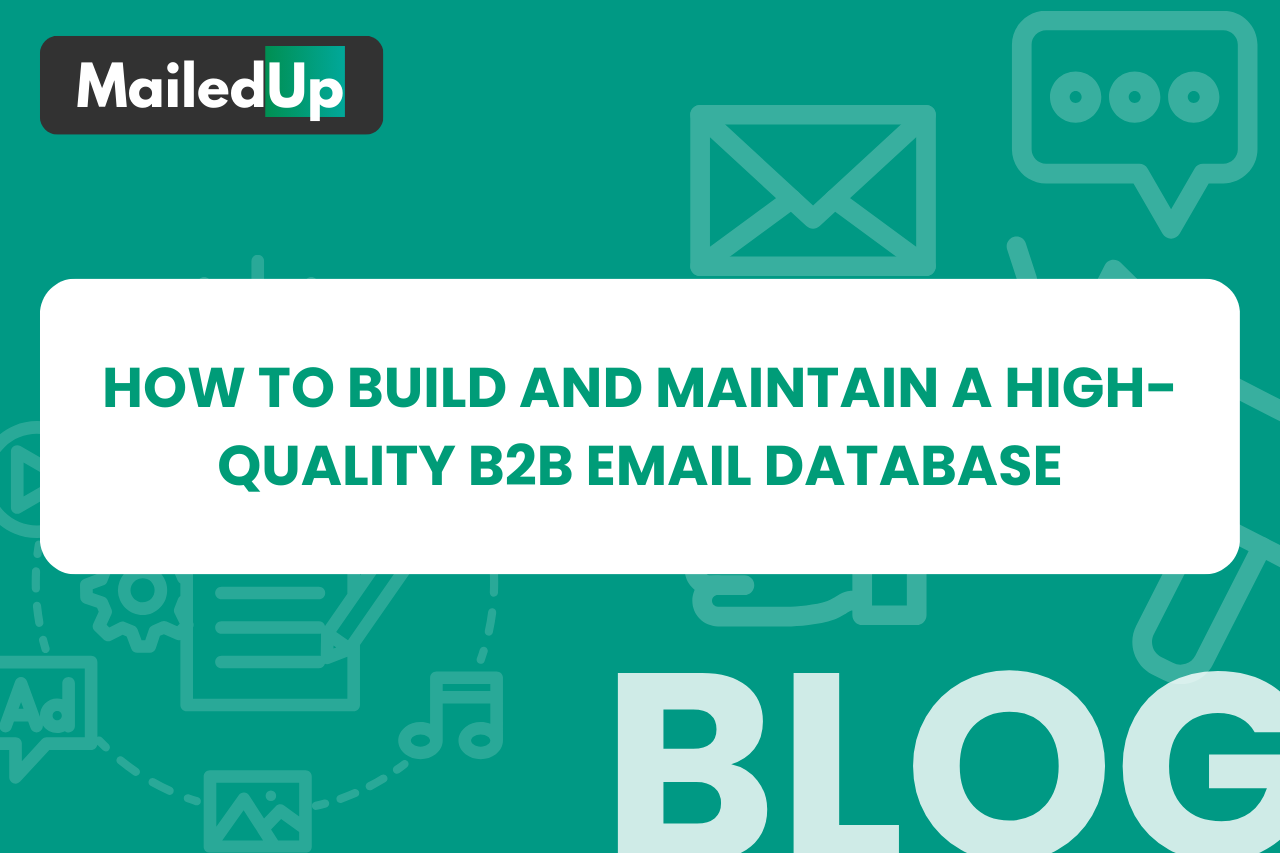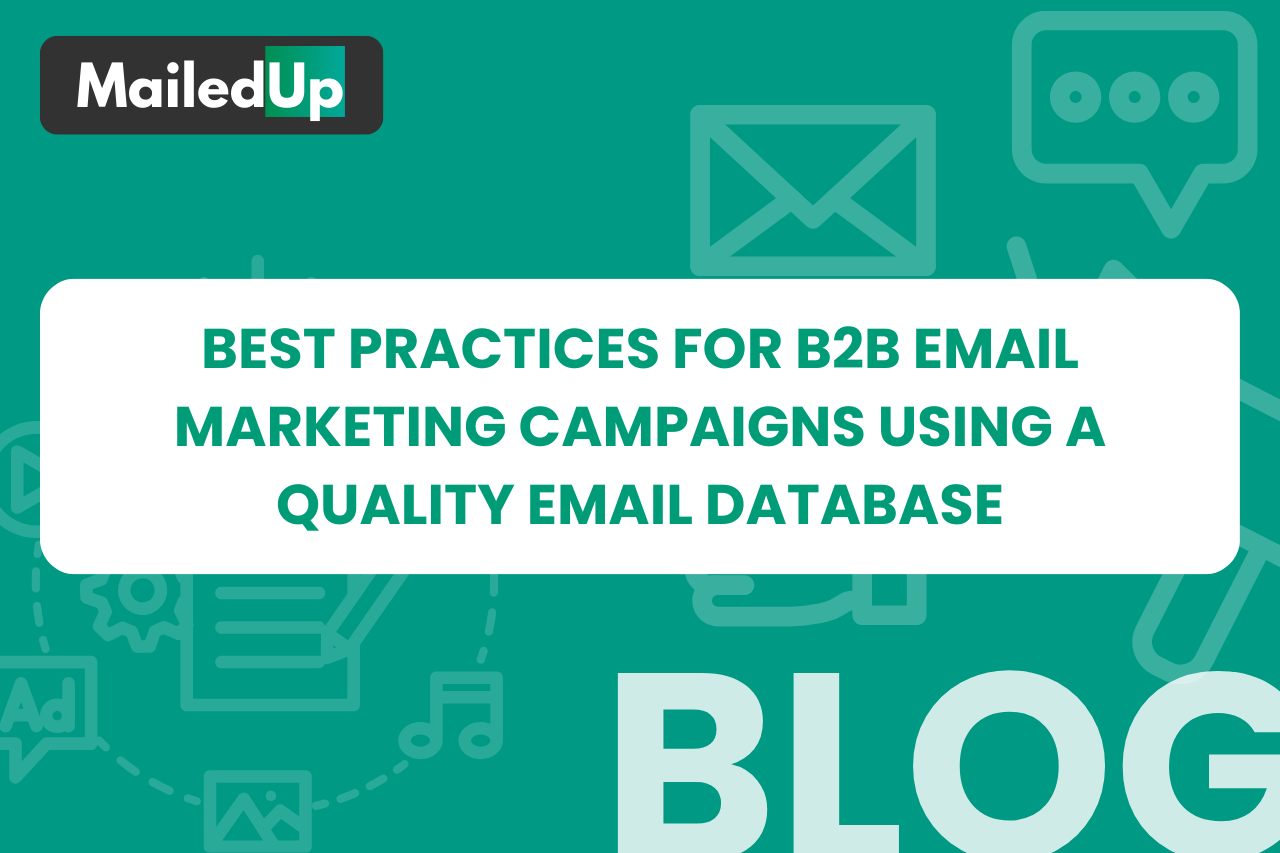Email marketing remains one of the most effective ways to engage with prospects and customers in the B2B sector. However, for your campaigns to truly deliver value, it's crucial to continuously optimize them. Whether you're sending cold emails to potential clients or nurturing existing leads, optimizing your B2B email marketing campaigns will ensure you're getting the best return on investment (ROI). In this post, we’ll discuss key strategies for optimizing your email campaigns, from list management to performance tracking.
Why Email Marketing ROI Matters in B2B
B2B email marketing can be a highly effective channel for generating leads, nurturing relationships, and driving conversions. But for businesses to justify their investment in email marketing, the ROI must be clear.
- Cost-Effective: Email marketing is one of the most affordable forms of communication in the B2B world, especially when compared to paid advertising or other outreach methods.
- Direct Engagement: Email provides a direct line of communication with your audience, making it easier to nurture leads and build long-term relationships.
- Measurable Impact: Email marketing is highly measurable. With the right tools, you can track performance, understand your audience’s behavior, and adjust your strategy to improve results.
Despite its benefits, many businesses fail to optimize their email campaigns effectively, leading to poor engagement rates, low conversions, and missed opportunities. In this article, we'll explore strategies to enhance your B2B email marketing ROI.
Step 1: Build a Clean and Segmented Email List
A high-quality, segmented email list is the foundation of any successful email marketing campaign. Without segmentation, your emails may be irrelevant to your recipients, resulting in lower open rates, higher unsubscribe rates, and decreased engagement. To optimize your email marketing ROI, consider these segmentation strategies:
- Industry or Vertical: Group your contacts based on their industry to tailor content and product offerings.
- Company Size: Customize your emails based on company size (e.g., SMBs vs. enterprises), as different business sizes often have different needs.
- Job Title or Role: Segmentation based on job title helps ensure you’re sending relevant information. For example, a CTO might care more about technical features, while a marketing manager may prefer insights on lead generation.
- Engagement Level: Identify leads who are actively engaged with your emails and those who haven’t interacted for some time. This allows for personalized follow-ups and re-engagement tactics.
The more granular you can be in segmenting your list, the better your chances of providing value to each recipient and improving your ROI.
Step 2: Personalize Your Emails
Personalization is a critical aspect of B2B email marketing. Recipients are more likely to open and engage with emails that feel personal and relevant to them. Personalization goes beyond just including the recipient's name in the subject line; it involves using data to tailor the content of your email to the specific needs and behaviors of your audience.
Here are a few personalization tactics that can optimize your email marketing campaigns:
- Dynamic Content: Use dynamic content blocks in your emails that change based on the recipient’s industry, location, or job role. This ensures the information is directly relevant to each person.
- Product Recommendations: If you know which products or services your leads are most interested in, include personalized recommendations that address their needs.
- Behavior-Based Emails: Trigger emails based on actions your recipients take (e.g., opening an email, downloading a resource, or abandoning a cart). This shows that you’re paying attention to their behavior and responding accordingly.
Personalized emails feel less like a generic blast and more like a tailored communication, which is likely to increase engagement, conversions, and ultimately, ROI.
Step 3: Craft Irresistible Subject Lines
The subject line is often the first thing a recipient sees, and it will determine whether they open your email or not. A well-crafted subject line grabs attention, piques curiosity, and encourages the recipient to open your email.
To optimize your subject lines for better performance:
- Keep It Concise: Aim for a subject line length of 6-10 words. Anything longer risks getting cut off, especially on mobile devices.
- Be Clear and Direct: Tell your recipients exactly what they will gain by opening the email (e.g., “Increase Your Sales by 20% with This Simple Strategy”).
- Use Urgency or Scarcity: Use time-sensitive language to create a sense of urgency, such as “Limited Time Offer” or “Last Chance.”
- Test and Optimize: Conduct A/B testing on different subject lines to see which ones perform best. This will help you refine your strategy over time and improve your open rates.
Step 4: A/B Test Your Campaigns
A/B testing is a valuable practice in email marketing. By comparing two versions of the same email (with one variation), you can determine which elements contribute to better engagement and ROI.
Here are some key elements you should A/B test in your B2B email campaigns:
- Subject Lines: As discussed, subject lines have a huge impact on open rates.
- Email Copy: Test different versions of your email copy to see what resonates best with your audience. Try changing the tone, length, and call-to-action (CTA) to find the winning combination.
- CTAs: Test different CTAs to determine which one drives the most conversions. For instance, “Request a Demo” versus “Download the Whitepaper.”
- Send Time: Experiment with sending emails at different times of day or days of the week to see when your audience is most likely to engage.
Step 5: Optimize Your Emails for Mobile Devices
In today’s world, more than half of emails are opened on mobile devices. If your emails aren’t mobile-friendly, you risk losing a significant portion of your audience. Optimize your email design for mobile to ensure a smooth user experience across devices.
Here’s how you can optimize your emails for mobile:
- Responsive Design: Use responsive email design so that your emails adapt to different screen sizes. Text should be easy to read, and images should resize appropriately.
- Shorter Subject Lines: Since mobile devices have limited screen space, keep your subject lines concise.
- Large Buttons and CTAs: Ensure that CTAs are large enough to click easily on smaller screens. A finger-friendly CTA will lead to higher conversion rates.
- Avoid Large Images: Large, uncompressed images can take a long time to load on mobile devices. Optimize images to maintain quality without sacrificing load time.
Step 6: Monitor and Analyze Performance
Continuous optimization requires ongoing tracking and analysis. Use email marketing analytics to measure the performance of your campaigns and identify areas for improvement.
Key metrics to track include:
- Open Rates: This will tell you how compelling your subject lines are.
- Click-Through Rates (CTR): CTR indicates how effective your email content and CTAs are.
- Conversion Rates: Track the number of recipients who take the desired action (e.g., making a purchase, filling out a form).
- Bounce Rates: High bounce rates may indicate issues with your email list quality. Regularly clean your list to improve deliverability.
Step 7: Automate Your Campaigns
Automation helps streamline email marketing efforts, saving time and ensuring that your messages are timely and relevant. Set up automated email sequences for different stages of the customer journey, such as:
- Welcome Series: Engage new subscribers with a series of introductory emails.
- Abandoned Cart Emails: Send reminders to leads who abandon their shopping cart.
- Re-engagement Campaigns: Reach out to inactive subscribers with special offers or surveys to gauge interest.
Automation ensures that you’re continuously nurturing leads without manual intervention, ultimately improving your email marketing ROI.
Prev Article
The Power of B2B Email Marketing: Key Statistics and ROI Insights to Boost Your Revenue
Next Article
The Global B2B Market: Key Statistics, Revenue Insights, and Email Marketing Usage in the B2B Sector





